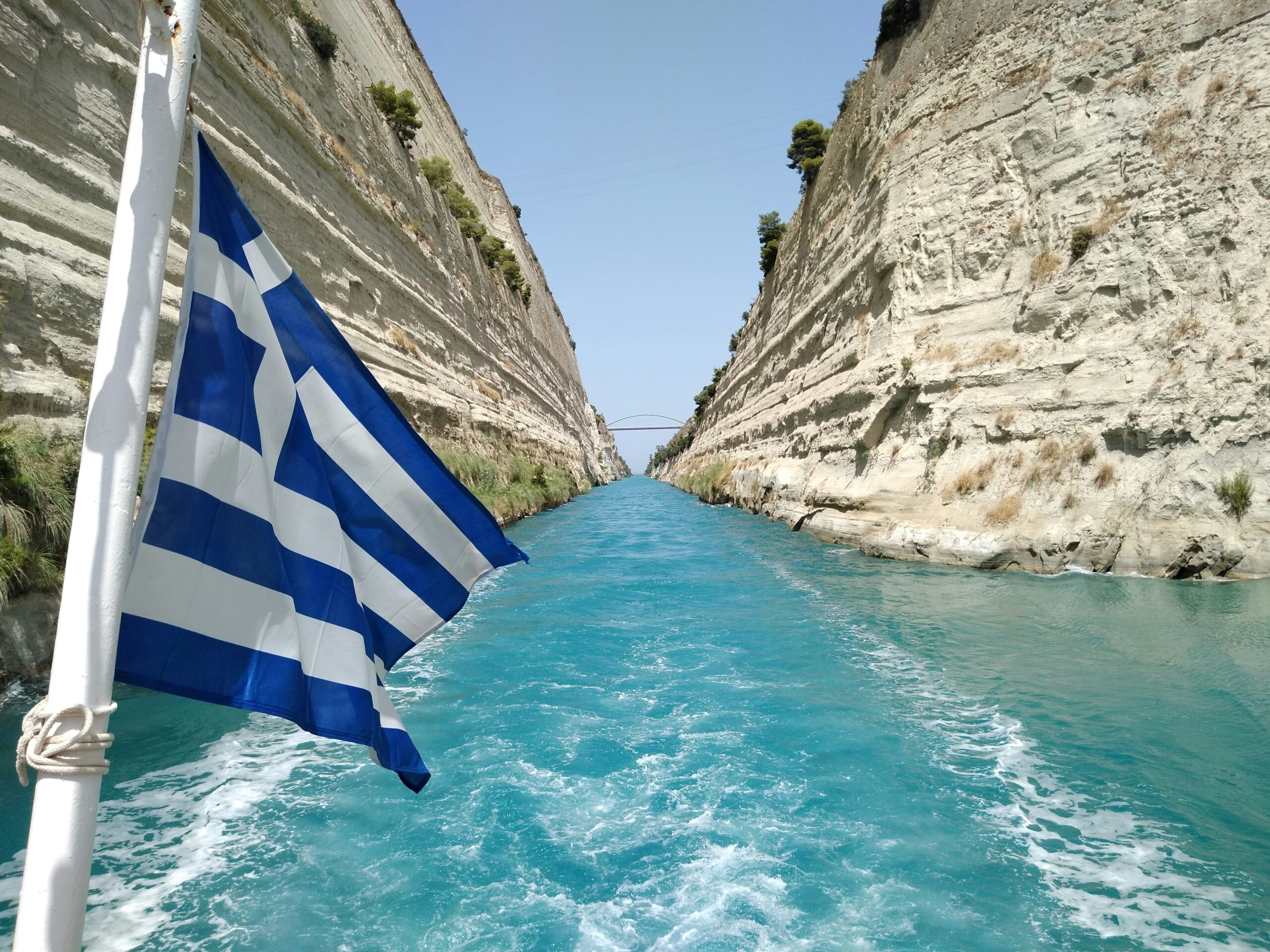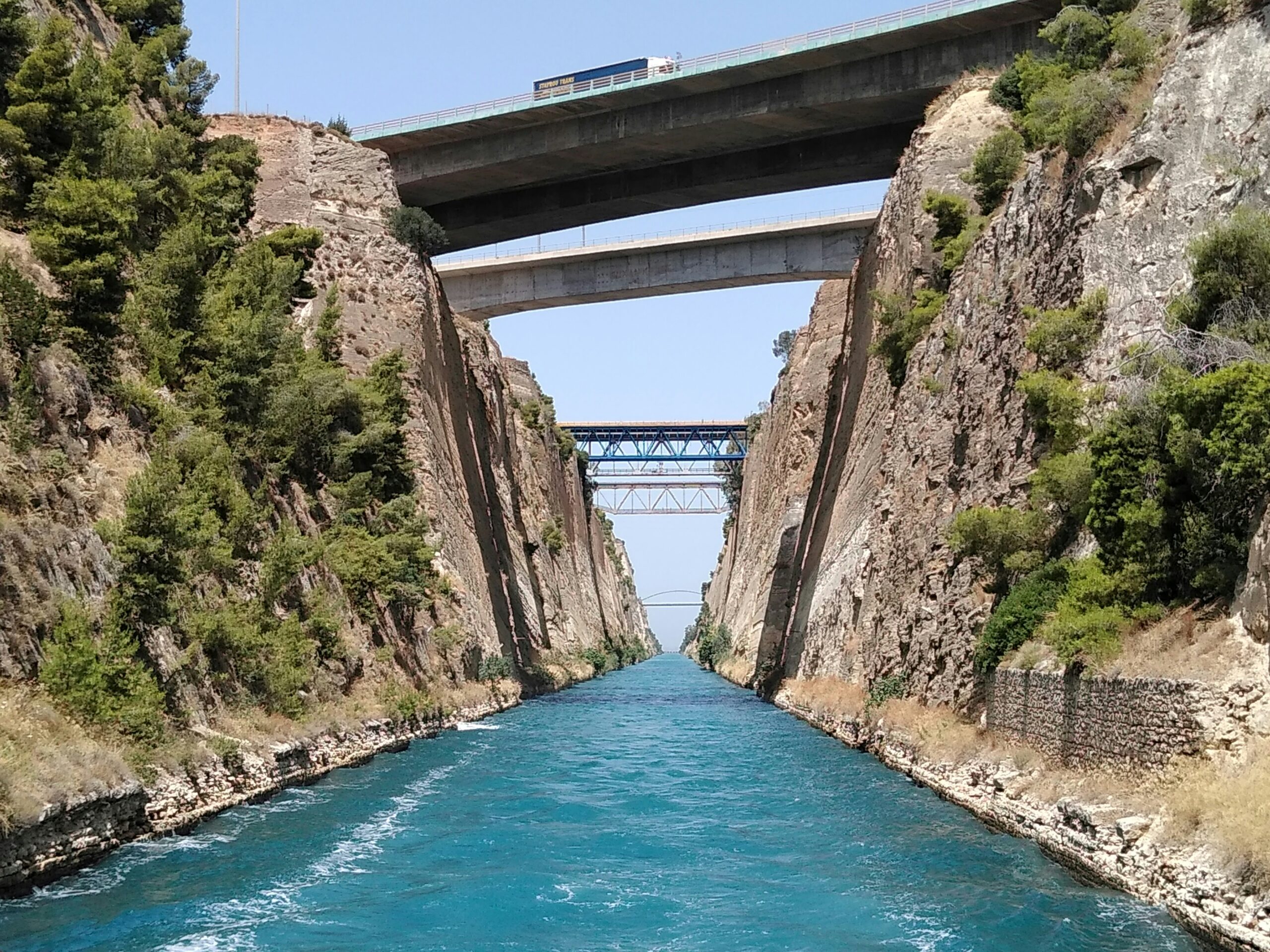The Corinth Canal is one of Greece’s most impressive engineering feats, a narrow waterway that dramatically slices through the Isthmus of Corinth, linking the Aegean Sea with the Ionian Sea. Let’s explore the canal’s history, unique physical features, its role today, and what makes it such a compelling destination for visitors. Although the canal is only about 6.4 kilometers (4 miles) long, it has played a huge role in maritime history and continues to amaze travelers with its sheer cliffs and fascinating story.

- A Shortcut Centuries in the Making
- What Makes It Special
- A Place for Adventure
- Visiting the Canal
- Why It’s Worth Seeing
A Shortcut Centuries in the Making
Sailors dreamed of a shortcut between the two seas for centuries, hoping to avoid the long and dangerous trip around the Peloponnese. Ancient rulers, for example, Periander in the 7th century BCE, and even Julius Caesar and Nero considered digging the canal. However, the technology of the time made it nearly impossible. Consequently, ships were dragged overland across the isthmus on a paved trackway called the Diolkos instead. Construction finally completed in 1893 after decades of planning and hard work. By this time, steamships were becoming larger and more advanced. Ironically, the canal was both a marvel and already a bit outdated for the biggest vessels.
What Makes It Special
The canal may be short, but it is certainly breathtaking. Its sides rise up to 79 meters (260 feet) high, carved straight into limestone. The base is only about 21 meters (70 feet) wide, which makes it too narrow for modern cargo ships. Nevertheless, smaller vessels, yachts, and tourist cruises still use it. Crossing the canal by boat and looking up at the towering cliffs is one of the most thrilling experiences for visitors. Equally exciting is walking or driving across one of the bridges that span the waterway. Furthermore, submersible bridges at each end sink below the surface to let boats pass.
A Place for Adventure
Beyond shipping, the Corinth Canal has also become a hotspot for daredevils. Bungee jumping off the bridge offers both thrills and jaw-dropping views, becoming a bucket-list activity for adrenaline seekers. Photographers, moreover, flock here to capture the striking perspective of a ship slowly moving between sheer walls of stone. As one visitor put it, “The view from the top is unlike anything else; it is a profound testament to human effort.”
Visiting the Canal
The canal is about an hour’s drive from Athens, making it a perfect day trip or a convenient stopover en route to the Peloponnese. You will not find a lengthy museum or visitor center here. Therefore, the best way to experience it is simply to stop at one of the viewpoints or take a short cruise. Watching a ship navigate the tight passage is mesmerizing; it is a living reminder of human ambition and ingenuity.

Why It’s Worth Seeing
The Corinth Canal is not just an engineering triumph; it is a symbol of persistence. For over two thousand years, people dreamed of connecting two seas through a sheer wall of rock, and they eventually accomplished it. Today, it stands as a reminder of both ancient ambition and modern achievement, while also offering visitors one of the most unique sights in Greece.
